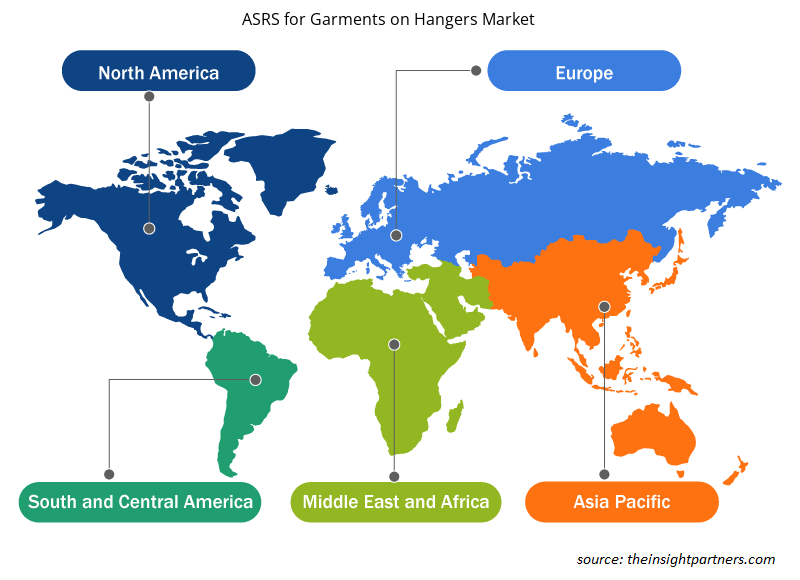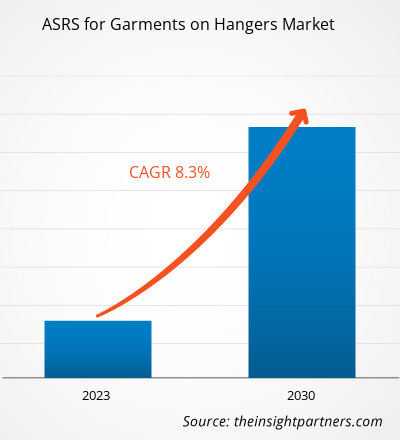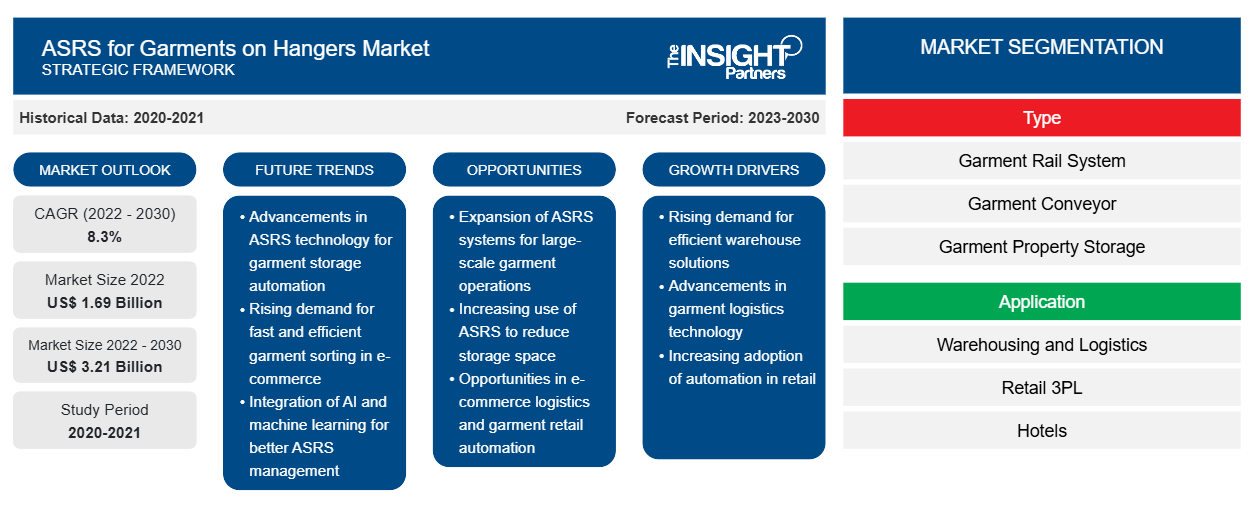[研究报告] 2022 年衣架上服装的 ASRS 市场规模价值 16.9 亿美元,预计到 2030 年将达到 32.1 亿美元;预计 2022 年至 2030 年的复合年增长率为 8.3%。
分析师观点:
自动存储和检索系统 (也称为 ASRS 系统) 广泛应用于制造和配送设施。它们通常取代大面积的货架,以节省地面空间、提高安全性和提高生产率。由于优化了物品存储和交付时间,这些系统在不断发展的电子商务和零售业中发展势头强劲。此外,全球各地的配送和物流中心都在采用这些系统来自动化存储和检索过程,引领市场。新兴的衣架服装 ASRS 市场参与者正在通过技术创新进一步创造新的市场机会。衣架服装ASRS 市场预测基于从 Factiva、公司简介、年度报告、各种协会等获得的二手数据。
衣架式服装自动仓储系统 (ASRS) 市场概览:
根据全球服装挂衣架 ASRS 市场分析,自动存储和检索系统采用单/双桅杆、伸缩叉/专门用于存储和检索织物卷的独特设计的直卷叉以及定制设计的机架设计,使该解决方案具有高度适应性、平稳性和安全性,适用于各种高速应用。报告中分析了上述所有组件和应用,以评估服装挂衣架 ASRS 市场规模。
自动存储和检索系统 (ASRS) 可以改善任何纺织设施中用于编织、针织和服装加工的物料流动和生产性能。理想的物料处理系统可以缩短物料运输时间,同时确保将必需的物料安全地移动到应用点而不会出现错误或损坏。例如,缝纫部门的物料处理系统可能会根据生产线架构进行调整,以确保将织物卷从一个工作站无缝运输到另一个工作站或进行存储或切割。ASRS 在纺织行业具有多种优势。ASRA 可以通过 ERP 集成来控制智能库存,节省物料移动和物流方面的人力,并有效利用仓库地面空间。它还提供从存储到生产的物料移动的绝对控制,以及物料的安全处理、快速的物料流动和先进先出。市场受到一些关键因素的推动,例如电子商务的增长、劳动力短缺导致的对 ASRS 的需求不断增长以及全球城市化进程的加快。预计未来几年市场还将经历多个推动增长的机会,包括增强订单履行与其他技术的整合,从而推动衣架服装自动仓储系统在全球市场的份额。
服装挂架 ASRS 市场分析基于类型、应用和地理位置。根据类型,服装挂架 ASRS 市场细分为服装轨道系统、服装传送带、服装财产存储等。根据应用,服装挂架 ASRS 市场细分为仓储和物流、零售 3PL、酒店、医院和机构等。根据地理位置,服装挂架 ASRS 市场分为北美、欧洲、亚太地区、中东和非洲以及南美。
Ferag、SDI element logic、Schonenberger、Beumer Group、Vanderlande、Dematic、KNAPP、Daifuku、ABCO、Railex、Conveyco 和 White Conveyor 是本次市场研究中所介绍的关键参与者。除了这些参与者之外,我们还研究和分析了其他几家重要的市场参与者,以全面了解全球衣架式服装自动仓储系统市场份额及其生态系统。
定制此报告以满足您的需求
您可以免费定制任何报告,包括本报告的部分内容、国家级分析、Excel 数据包,以及为初创企业和大学提供优惠和折扣
-
获取此报告的关键市场趋势。这个免费样品将包括数据分析,从市场趋势到估计和预测。
衣架式服装自动仓储系统 (ASRS) 市场驱动因素:
劳动力短缺导致需求激增,推动服装挂衣架自动仓储系统市场增长
近年来,服装行业经历了向自动化的重大转变,以克服劳动力短缺带来的挑战。随着对高效订单履行和存储解决方案的需求不断增长,企业正在采用自动存储和检索系统 (ASRS) 作为可行的解决方案。例如,根据 Instawork 在 2022 年 2 月进行的一项调查,73% 的仓库运营商在招聘劳动力以满足其业务需求方面面临挑战。劳动力短缺已成为服装行业的一个重大问题,导致对 ASRS 作为解决方案的需求不断增长。
尽管零售额和商业库存水平强劲,但仓储行业的劳动力市场一直落后。根据劳工统计局的数据,2023 年 1 月仓库工作岗位增加了 13,400 个,占全国工作岗位的 1,728,200 个。然而,该行业仍然存在人员不足的问题。ASRS 通过自动化服装行业的存储、检索和分类流程提供了节省劳动力的解决方案。通过实施 ASRS 系统,企业可以减少对手动、劳动密集型任务的依赖,并克服劳动力短缺带来的挑战。
此外,劳动力短缺往往会导致劳动力成本增加,因为雇主必须争夺可用的工人。通过为 GOH 实施 ASRS,企业可以减少对人工和相关成本的依赖。这些系统通过最大限度地降低劳动力成本、优化空间利用率和减少订单履行中的错误来提供长期投资回报 (ROI)。通过降低劳动力成本和提高运营效率,企业可以将资源分配给研发或营销计划和其他关键领域。因此,由于劳动力短缺而导致的需求激增推动了衣架服装 ASRS 市场的增长。
衣架服装自动仓储系统 (ASRS) 市场细分分析:
根据类型,衣架服装 ASRS 市场分为服装轨道系统、服装传送带、服装属性存储等。服装轨道系统由服装制造商、配送中心、洗衣店和零售行业使用。它要么采用手动轨道系统,要么采用全自动检索系统,有助于最大限度地提高生产力。这些服装配送传送带具有自动装卸服装的功能。在许多 ASRS 设置中,服装轨道系统设计为跨多个级别或层级运行,以最大限度地利用垂直存储空间。下订单时,ASRS 系统会识别所需服装的位置并自动从轨道系统中检索它。轨道系统可以包括分类机制,以根据订单要求简化检索过程。衣架服装 ASRS 市场中的服装轨道系统对于自动服装存储和检索系统的效率、准确性和整体性能至关重要。它满足了服装行业的独特要求,其中保持悬挂服装的完整性对于订单履行至关重要。
衣架服装自动仓储系统 (ASRS) 市场区域分析:
美国、加拿大和墨西哥是北美的主要国家,北美被视为技术发展的中心。随着物联网的日益普及,美国公司正在通过自动化存储解决方案实施该技术,从而节省时间和成本。物联网集成的自动化存储解决方案可实现远程监控、及时生成报告状态、在出现任何错误时更快地恢复以及提高效率。蒙特利尔是北美的时尚之都。一个多世纪以来,它一直是纺织品设计、制造和处理的创新中心。因此,北美的几家参与者正专注于开发用于衣架服装市场的 ASRS 解决方案。例如,截至 2021 年 4 月,Planiform 推出了其革命性的自动化系统,用于存储和检索衣架服装 (GOH)。2021 年 7 月,GOH Hive 推出,预计将获得各种服装处理企业的赞誉,包括仓库、配送中心和电子商务企业等。 GOH Hive 是一个由智能机器人驱动的尖端系统,它可以读取独特的 SKU,然后确定每件服装的处理方式。该系统设计为多个级别,机器人利用电梯来访问一排排准备发货的服装。此外,该地区的多家参与者正在为挂衣市场提供 ASRS 解决方案。例如,Dematic 提供了广泛的存储选项,旨在减少和调动库存。该公司可以协助组织和控制托盘、纸箱(手提箱)和挂衣上的货物。因此,这种情况推动了北美挂衣市场 ASRS 的增长。
衣架服装自动仓储系统 (ASRS) 市场关键参与者分析:
Ferag、SDI element logic、Schonenberger、Beumer Group、Vanderlande、Dematic、KNAPP、Daifuku、ABCO、Railex、Conveyco 和 White Conveyor 是服装挂架自动仓储系统市场报告中介绍的知名企业。服装挂架自动仓储系统市场预测可以帮助该市场的利益相关者规划其增长战略。
衣架服装自动仓储系统市场区域洞察
Insight Partners 的分析师已详细解释了预测期内影响挂衣架服装 ASRS 市场的区域趋势和因素。本节还讨论了挂衣架服装 ASRS 市场细分和地理分布,包括北美、欧洲、亚太地区、中东和非洲以及南美和中美洲。

- 获取衣架服装自动仓储系统 (ASRS) 市场的区域特定数据
衣架服装自动仓储系统市场报告范围
| 报告属性 | 细节 |
|---|---|
| 2022 年市场规模 | 16.9亿美元 |
| 2030 年市场规模 | 32.1亿美元 |
| 全球复合年增长率(2022 - 2030 年) | 8.3% |
| 史料 | 2020-2021 |
| 预测期 | 2023-2030 |
| 涵盖的领域 |
按类型
|
| 覆盖地区和国家 |
北美
|
| 市场领导者和主要公司简介 |
|
市场参与者密度:了解其对商业动态的影响
服装挂衣架自动仓储系统市场正在快速增长,这得益于终端用户需求的不断增长,这些需求源于消费者偏好的不断变化、技术进步以及对产品优势的认识不断提高等因素。随着需求的增加,企业正在扩大其产品范围,进行创新以满足消费者的需求,并利用新兴趋势,从而进一步推动市场增长。
市场参与者密度是指在特定市场或行业内运营的企业或公司的分布情况。它表明在给定市场空间中,相对于其规模或总市场价值,有多少竞争对手(市场参与者)存在。
在衣架服装自动化系统市场运营的主要公司有:
- 费拉格股份公司
- Element Logic 美国 Bidco 公司
- ABCO 系统有限公司
- 施诺贝格系统有限公司
- 伯曼集团有限公司
免责声明:上面列出的公司没有按照任何特定顺序排列。

- 获取服装挂衣架市场 ASRS 顶级关键参与者概览
最新动态:
服装挂架式自动仓储系统市场中的公司大量采用并购等无机和有机战略。以下列出了服装挂架式自动仓储系统市场的一些近期关键发展:
- 2023 年 5 月,Ferag 加强了对亚洲市场的承诺。在系统集成商 ASETEC 的支持下,Ferag 的完整内部物流解决方案将在韩国得到越来越多地应用。两家公司已就此达成合作伙伴关系。
- 2022年3月,以AutoStore系统为中心的自动化仓库解决方案专业集成商Element Logic宣布收购美国领先的交钥匙自动化解决方案和分拣系统供应商SDI Industries。
- 2022 年 5 月,BEUMER 集团收购了输送系统和装载技术供应商马格德堡 FAM GmbH。合同签署后,交易将于 5 月底完成。这也大大加强了 BEUMER 集团在大型设备领域的市场地位。
- 历史分析(2 年)、基准年、预测(7 年)及复合年增长率
- PEST和SWOT分析
- 市场规模、价值/数量 - 全球、区域、国家
- 行业和竞争格局
- Excel 数据集
近期报告
客户评价
购买理由
- 明智的决策
- 了解市场动态
- 竞争分析
- 客户洞察
- 市场预测
- 风险规避
- 战略规划
- 投资论证
- 识别新兴市场
- 优化营销策略
- 提升运营效率
- 顺应监管趋势























 获取免费样品 - 服装挂衣市场自动化系统
获取免费样品 - 服装挂衣市场自动化系统